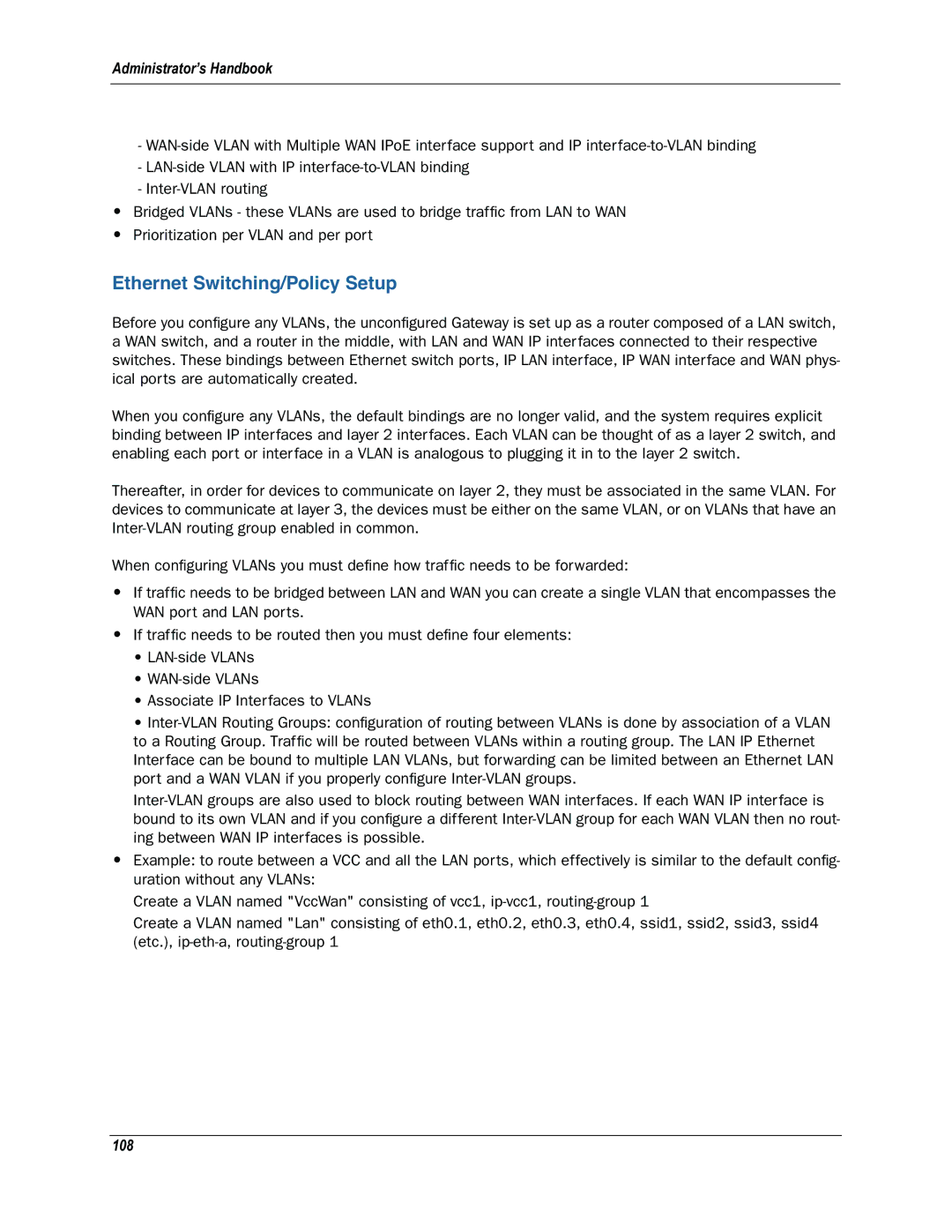
Administrator’s Handbook
-
-
-
•Bridged VLANs - these VLANs are used to bridge traffic from LAN to WAN
•Prioritization per VLAN and per port
Ethernet Switching/Policy Setup
Before you configure any VLANs, the unconfigured Gateway is set up as a router composed of a LAN switch, a WAN switch, and a router in the middle, with LAN and WAN IP interfaces connected to their respective switches. These bindings between Ethernet switch ports, IP LAN interface, IP WAN interface and WAN phys- ical ports are automatically created.
When you configure any VLANs, the default bindings are no longer valid, and the system requires explicit binding between IP interfaces and layer 2 interfaces. Each VLAN can be thought of as a layer 2 switch, and enabling each port or interface in a VLAN is analogous to plugging it in to the layer 2 switch.
Thereafter, in order for devices to communicate on layer 2, they must be associated in the same VLAN. For devices to communicate at layer 3, the devices must be either on the same VLAN, or on VLANs that have an
When configuring VLANs you must define how traffic needs to be forwarded:
•If traffic needs to be bridged between LAN and WAN you can create a single VLAN that encompasses the WAN port and LAN ports.
•If traffic needs to be routed then you must define four elements:
•
•
•Associate IP Interfaces to VLANs
•
•Example: to route between a VCC and all the LAN ports, which effectively is similar to the default config- uration without any VLANs:
Create a VLAN named "VccWan" consisting of vcc1,
Create a VLAN named "Lan" consisting of eth0.1, eth0.2, eth0.3, eth0.4, ssid1, ssid2, ssid3, ssid4 (etc.),
